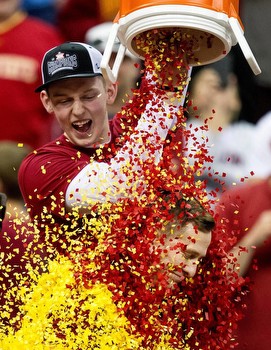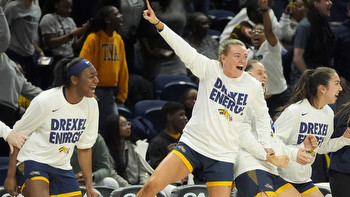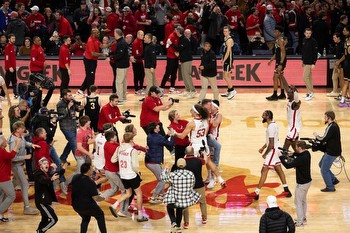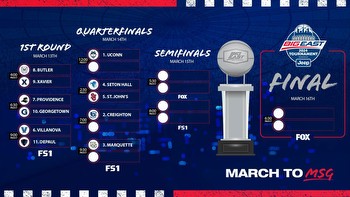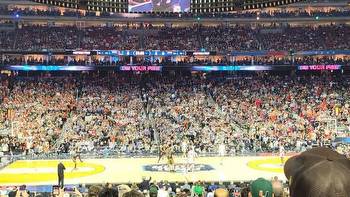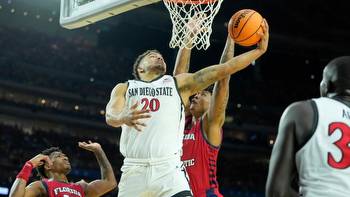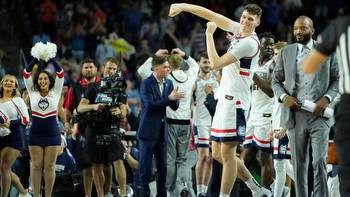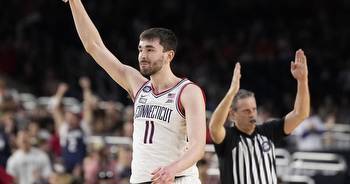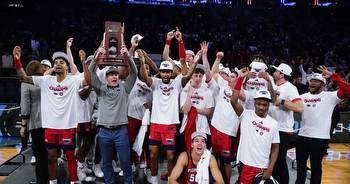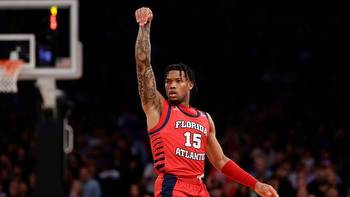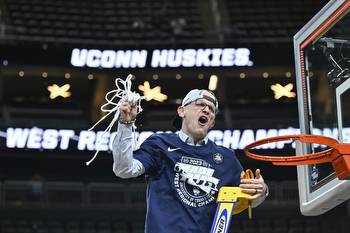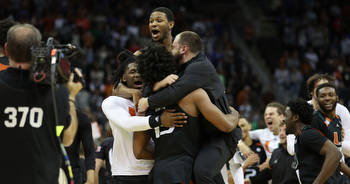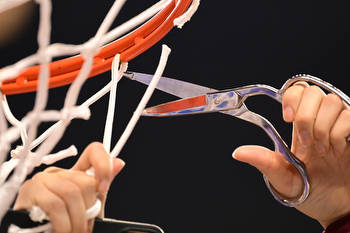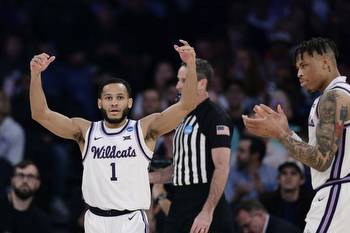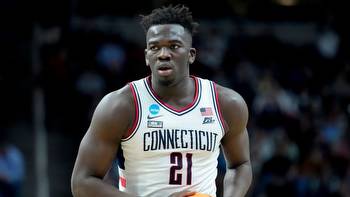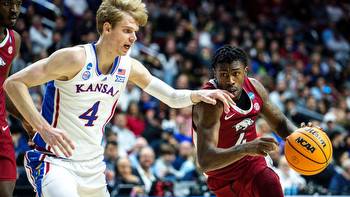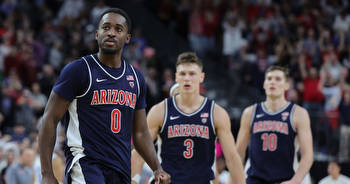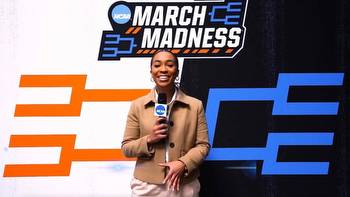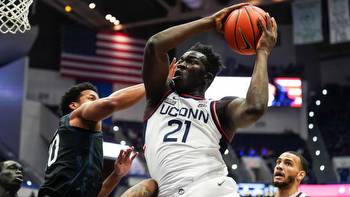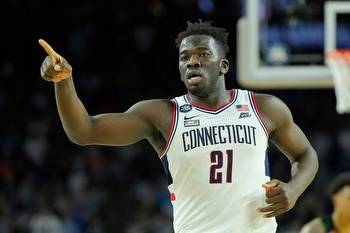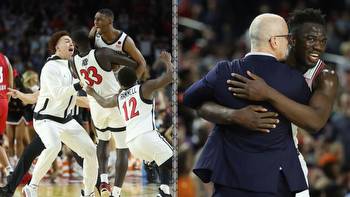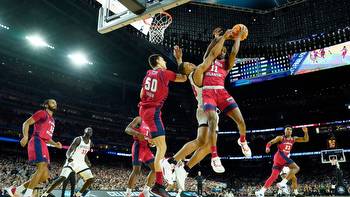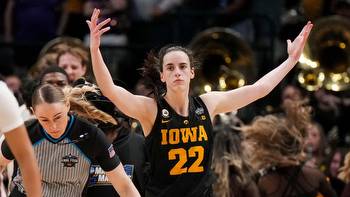Winners and Losers of the Elite Eight
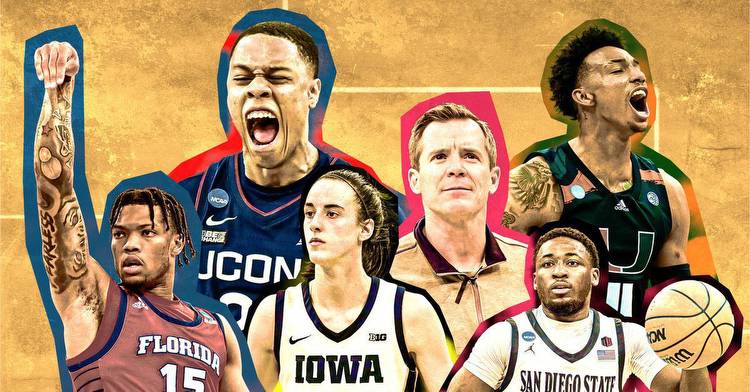
Who shined the most in this round of March Madness? Who fell short? Let’s dive into a special edition of winners and losers.
Winner: New Bloods
A term you always hear with college hoops is “blue bloods.” This sport reveres the teams that always win—and, for some reason, they all seem to wear shades of blue: Duke, Kansas, Kentucky, and North Carolina on the men’s side, and UConn on the women’s side. They get the best players, play in the biggest games, and draw the highest TV ratings. It’s a reverence that has always felt antithetical to the spirit of the sport that promises madness—don’t we live for upsets and underdogs? Shouldn’t we yearn for someone new to hoist the trophy?
In 2023, the college hoops universe flipped. Only one of the men’s teams in this year’s Final Four has won a championship; the other three had never even made a Final Four. Neither of the first two women’s teams to advance past the Elite Eight, LSU and Iowa, has a title. (Two previous champs, South Carolina and Maryland, face off Monday for a spot in the Final Four. The final spot will go to either Ohio State or Virginia Tech.) None of the five men’s teams with the most championships and none of the four women’s teams with the most championships even made it to the Elite Eight of their respective brackets.
The men’s tournament is unlike any in history: None of the 1-, 2-, and 3-seeds are left standing, the first time that none have reached the Final Four. The last time the Final Four had three first-time participants was 1970, when it was a lot easier to get three first-time participants because they played 51 fewer tournaments. Either San Diego State or Florida Atlantic will play in the national championship game. Either San Diego State or Florida Atlantic will play in the national championship game. Neither of those teams plays in a major conference, neither had reached the Elite Eight before doing so this year, and after their matchup in next Saturday’s national semifinal, one will play for a national championship.
Before this season, Florida Atlantic had never even won an NCAA tournament game; the school has never produced an NBA player. The school was most famous for “not being Florida International” and “employing Lane Kiffin for a few years.” Now they’re in the Final Four! When asked Saturday night whether this was the greatest moment in the history of the university, athletic director Brian White was hesitant to say yes—but only because he isn’t 100 percent sure of what other stuff the university has accomplished. “I don’t understand most of the research that goes on. They may have cured diseases,” White said on the court after FAU reached the Final Four. “I don’t want to stick my foot in my mouth, but, you know, from an athletics perspective, yeah, I don’t see how it gets bigger.”
The lone men’s Final Four team with a national title is 4-seed UConn—but in the women’s bracket, the Huskies’ absence is a huge story. UConn had made 14 consecutive Final Fours, but the heavily injured Huskies were knocked out of this year’s tournament in the Sweet 16 by Ohio State. This year, Stanford had its 14-year Sweet 16 streak snapped when it was upset in the second round last weekend. UConn, Stanford, and Tennessee have historically been such dominant teams in women’s basketball that this was the first Elite Eight since 1985 that didn’t include at least one of those schools.
A sport with more potential champions is a healthy sport. It’s a sport that gives fans more reasons to believe and a sport with more stories to tell. College basketball has always masqueraded as a wide-open field with the opportunity for anybody to win, but only a select few have actually pulled it off. Now, the dreams we dream are finally coming true.
Winner: Miami’s Ass-First Comeback
The reports say that Miami reached its first Final Four by pulling off a 13-point comeback in the second half of its win over a heavily favored Texas team; the in-depth breakdowns say that it happened because the Hurricanes switched to an all-small lineup, with forward Jordan Miller playing de facto center for the first time all season; the stats say they did it because Miller scored 26 points on perfect shooting (7-for-7 from the field, 13-for-13 from the free throw line).
All of this is untrue. Miami won when Wooga Poplar inbounded the ball off the butt of Texas’s Timmy Allen, and it ricocheted perfectly back to him for an uncontested dunk.
You’ve seen this play before, at every level from middle school to the NBA. Incidentally, every team ever to score in this way has won their game. (This is true—don’t look it up.) Texas had just taken its largest lead of the game when Miami busted out the Ass Pass; while the two teams were obligated to play out the game, Texas courteously let The U come back in prompt fashion and win, as is customary after someone scores on you in such humiliating fashion.
Loser: Buzzer-Beating Free Throws
A foul in the closing seconds of a tight game inevitably turns sports conversations into philosophical discussions: Is it OK for a ref to call a foul in a huge moment and decide the game? Isn’t a ref ethically bound to call every play with the same dedication to the rule book, no matter how much time is on the clock? Wouldn’t the refs also be deciding the game, in a different way, if they didn’t blow the whistle and allowed players on one team to break the sport’s rules without punishment? Why do bad referees happen to good people?
This scenario happened at the end of the Super Bowl last month and again at the end of Sunday’s Elite Eight game between San Diego State and Creighton. With the game tied and the final seconds on the clock winding down, SDSU’s attempt to run a coherent final play to set up a game-winning shot went nowhere. So Darrion Trammell drove and threw up a floater and hoped for the best. His shot clanged off the front iron—this was a theme—but the officials blew their whistles. They called Creighton’s Ryan Nembhard for a subtle but real push on Trammell’s hip while Trammell was in the air:
Trammell went to the line with 1.4 seconds on the clock. He missed the first free throw to add faux suspense but gathered his wits and hit the second to win the game and send SDSU to its first Final Four.
The argument for the call is simple: It was a foul! The defender pushed a guy who was shooting. And if it’s a foul in the first half, it’s a foul with the game on the line.
But that’s also part of the argument for why the ref shouldn’t have blown the whistle here. This was a very physical game—every game SDSU plays is very physical—but officials called only 22 fouls, 11 per team. That’s the fewest combined fouls of any game in the entire tournament. Neither team was in the bonus at any point. For comparison, Texas alone was called for 23 fouls in its loss to Miami.
In the first 39 minutes and 39 seconds, Creighton had been called for only two shooting fouls, while SDSU went 7-for-17 on shots listed as layups in the official box score. That doesn’t happen without a couple of uncalled bumps. Nembhard made the mistake of believing the officials would call the final play the way they’d called the whole game, and now, Creighton’s season is over.
Loser: Extremely Cool (but Technically Illegal) Shots
A non-basket in the Miami game ignited an entirely different rules controversy—not “Should this call have been made?” but “Why does this rule exist?” Hurricanes star Nijel Pack hit a shot that would’ve won him a game of H-O-R-S-E but was officially considered a turnover:
Pack’s shot soared behind and over the top of the backboard and into the net—an astounding feat of skill. Pack was on the move as the ball left his hand and still managed to put the perfect touch on the ball to make it travel over the backboard, the top of which is 13 feet off the court. But the game officials ruled the ball was out of bounds and gave Texas possession.
I was a bit surprised at the ruling, since NBA players take and make this shot every once in a while. (Here’s LeBron doing it and a highlight from Jrue Holiday earlier this year.) But there’s apparently a subtle difference in the rule books of pro ball and the college game: The NBA says a ball is out of bounds if it “passes directly behind the backboard, in any direction,” while the NCAA says a ball is out of bounds if “any part of the ball passes over the backboard from any direction.”
I can’t imagine any logic behind the NCAA rule. I understand that you want any rebounds that ricochet over the top of the board to be out of bounds—but the NBA rule does that without eliminating the sort of spectacular shot Pack hit on Sunday. It’s a small rule that rarely comes up, but it robbed us of a moment of tourney brilliance.
Winner: The Caitlin Clark Show
The Caitlin Clark Show has been the best watch in college basketball for three years. In 2021 she led Division I in scoring; this year she led Division I in assists; in 2022 she led Division I in scoring and assists. She has brought Iowa sellout crowds, conference titles, and millions of TV viewers.
Last week, we wrote about one manifestation of Clark’s greatness: That even on poor shooting nights, she still manages to put up numbers and win Iowa games. In the Elite Eight against Louisville, she did not have a poor shooting night.
She drilled eight 3s and finished with 41 points, 12 assists, and 10 rebounds—the first 40-point triple-double ever recorded in the NCAA tournament. Incidentally, it was also the first 30-point triple-double. She leapt so high over what anybody else has accomplished that she skipped a step. On the men’s side, only Oscar Robertson has had a 30-point triple-double, and that technically doesn’t count since assists weren’t an official stat when he played.
Everybody knows they are tuned in for the Caitlin Clark Show, including opposing defenses, and all they can do is watch. If they guard her too closely, she’ll simply assist one of her teammates—or she might just hit a 28-foot 3 despite their efforts. It seemed like Louisville’s best hope of taking down Clark was through the offense of Hailey Van Lith, who is sixth in the nation in scoring. She put up 27, and it didn’t matter.
The only problem with the Caitlin Clark Show is that its past seasons were canceled early—the Hawkeyes lost in the Sweet 16 in 2021 and were stunned in the second round at home on a Creighton buzzer-beater last year. But now the most electric player in basketball is putting up her best performances against the best opponents in the biggest games of the year. Her next opponent could be South Carolina, the reigning champs and heavy title favorites. It could be the best episode yet.
Winner: UConn Magic (Again)
I have always felt deeply unsettled in the state of Connecticut, a place where I have spent years of my life. People there insist Connecticut has the best pizza in the world despite nobody else anywhere attempting to make Connecticut-style pizza; it is one of the most densely populated states in the nation, with 88 percent of the population living in “urban” settings, despite the fact that Connecticut isn’t typically thought of as having cities; and it has the world’s largest sports media empire despite not having any pro sports teams. The image in your head of What Connecticut Looks Like (Stars Hollow on Gilmore Girls) is in fact a studio in Los Angeles, and not necessarily connected to what Connecticut actually looks like. It is a place between realms—specifically New York and New England—and you should fear it deeply. Don’t just take my word for it—look at the UConn basketball team.
The women are the queens of college hoops—in all years besides this one—and the men are the kings of showing up in March and randomly winning the whole damn thing. The Huskies have four championships since 1999, more than any other team in that timespan, but it doesn’t feel like a dynasty: They’ve had three coaches and been in conference limbo thanks to the total non-competitiveness of the football program. None of their titles feel linked to one another, and the last two came totally out of nowhere.
In 2011, the Huskies finished ninth in the Big East and had lost seven of their final 11 games heading into the conference tourney. That was when Kemba Walker decided he was done losing. The Huskies won five games in five days (including some iconic game-winners) to take the Big East, then got to the Final Four and beat Butler in one of the ugliest championship games of all time. In 2014, the Huskies struggled under second-year coach Kevin Ollie, going 0-5 against Louisville and SMU in the new American Athletic Conference; they got a 7-seed in the NCAA tournament and went ahead and won it anyway, becoming the lowest seed ever to take home a championship. Both title games were against 8-seeds, the only two 8-seeds ever to reach the championship.
It’s happening again this year. After a January slump when the Huskies lost six of eight games, the Huskies got only a 4-seed in the NCAA tournament. But the tourney started, and they became utterly dominant. They have won four games by a combined 90 points—no Kemba buzzer-beaters needed. They thumped Gonzaga by 28 in the Elite Eight, the only one of the four games that didn’t come down to the wire.
And just like in 2011, they’ve reached the Final Four only to find that all the best teams have been knocked out already. That Final Four was the first without a 1- or 2-seed; this is the first without a 1–, 2-, or 3-seed. The Huskies are odds-on favorites to win the Final Four, an odd scenario for any team—but especially a 4-seed.
It feels like another UConn miracle run—and yet it doesn’t. Advanced metrics have considered the Huskies one of the best teams in the sport all year long. Twenty-five of their 29 wins were by double digits, while four of their eight losses were by three points or less. Outside of that January blip, they are 22-2, with comfortable wins over highly seeded squads like Alabama and Marquette. They entered the NCAA tourney ranked fourth in Ken Pomeroy’s ratings—way higher than you’d expect a 4-seed to be—and have risen to no. 1. The data says the Huskies are not just the best team left standing, but the best team in basketball this season.
Past Connecticut runs were evidence of the madness of March; this year they’ve shown us the madness of the regular season. The Huskies always seem to be up to something unseemly; this year they hid a legit title contender in the disguise of a NCAA tourney fluke.

